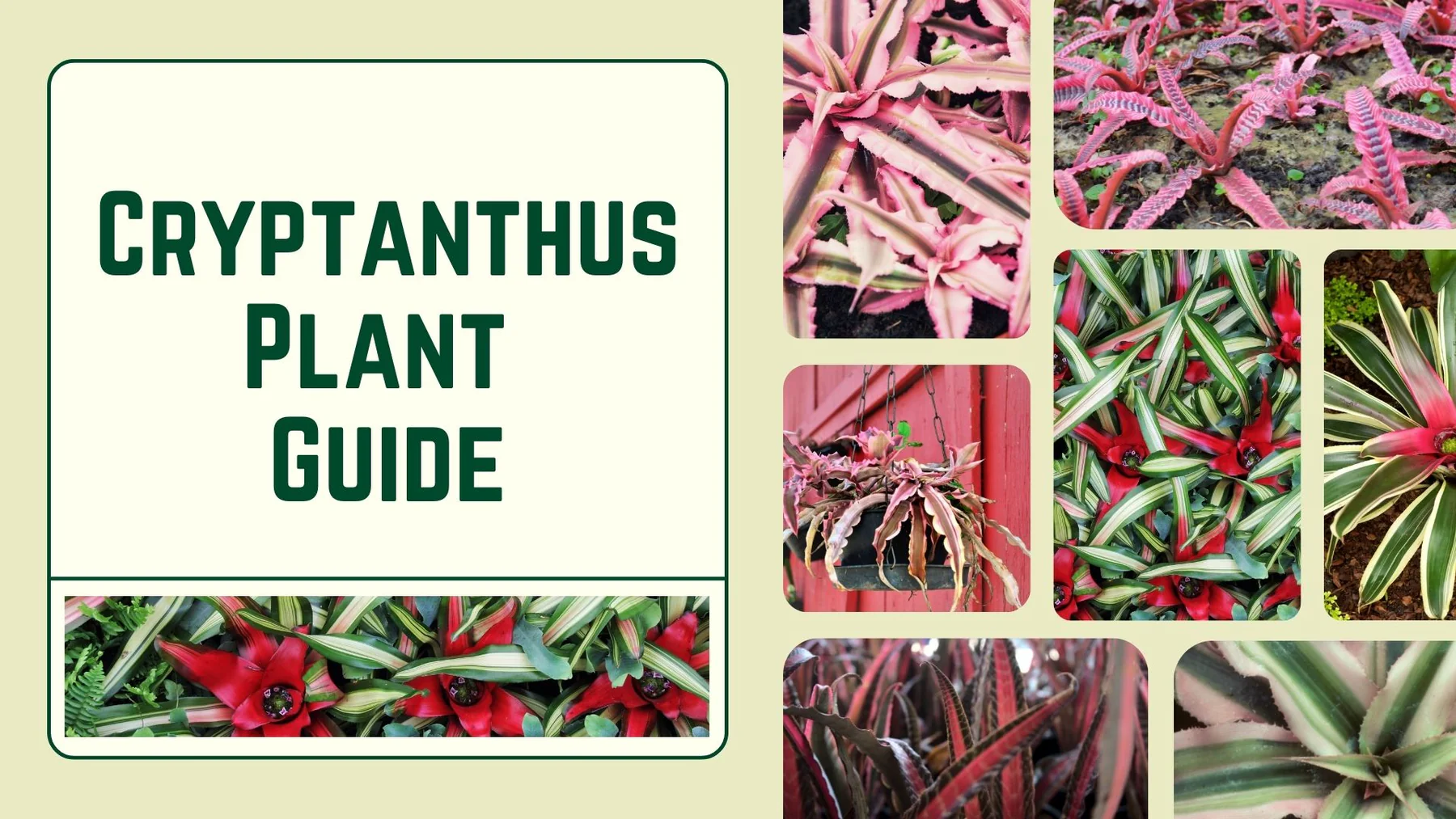
Cryptanthus Plant Guide
Cryptanthus are fascinating indoor plants that are ideal for adding a touch of texture and colour to your rooms. They make fantastic living centrepieces for special parties and are little enough to flourish indoors on bright tabletops. These lovely indoor plants are slow-growing and perfect for terrariums and tabletop décor as well.

One can admire their beauty without having to do a lot of maintenance as they don't require continuous care. With their stiff, slightly coarse and rosette-shaped arrangement of the leaves, cryptanthus bromeliads have a unique appearance. Due to its unique shape, the species is also known as the earth star, starfish plant, and red star bromeliad.
Cryptanthus, also known as earth stars, are stunning and incredibly diverse plants that are native to Brazil. The genus Cryptanthus belongs to the subfamily Bromelioideae of the Bromeliaceae family of flowering plants. The Cryptanthus genus has more than 1,200 different species of bromeliads with a diverse variety of foliage. They can be solid, banded, spotted, or almost any other pattern, and their colours range from crimson to bright pink to dark green.
Why is Cryptanthus referred to as an "earth star"?
The name "Earth Stars" for Cryptanthus is more widely used, and it was given to them because of the way their foliage was shaped. In contrast to many other bromeliads, which can grow mounted on a substrate, earth star bromeliads are distinctive in that they only grow on the ground. The Greek word cryptanthus means "hidden flower" in English.
Cryptanthus Species
Almost any gardener can find a Cryptanthus that meets their needs because Cryptanthus is a large genus with an extraordinarily diverse collection of plants. For instance, the Cryptanthus 'Osiris', also renowned as the rainbow star, is bright and colourful, while the bromeliad 'Black Mystic' is renowned for its mysterious, ominous foliage.

When selecting a plant, keep in mind that the botanical names of bromeliad species frequently provide hints about a type of Cryptanthus' appearance.
Cryptanthus bivittatus
The terrestrial Bromeliad Cryptanthus bivittatus 'Red Star' has lovely red-tinged foliage.
Cryptanthus Acaulis Variegata
Many people find the rare species Cryptanthus Acaulis Variegata to be very attractive. This tiny Cryptanthus with shiny leaves grows into a rosette with a 15 cm diameter. The creamy-yellow variegation on the mid-green foliage is frequently marginated.

Cryptanthus Red Star
With wavy, black and pink leaves, it quickly clusters into small, upright growths. Although Cryptanthus bivittatus 'Red Star' grows moderately to slowly in comparison to other Cryptanthus, it will eventually form clumps that should be divided as they become denser.
Cryptanthus Fosterianus Elaine
Cryptanthus Fosterianus Elaine's leaves are chocolate-brown with zebra-like grey stripes, and the hybrid is dull green with orange-pink and cream stripes, creating a lovely, sizable rosette. The majority of Cryptanthus require bright, diffused light to show off their full colour, not direct sunlight.
Cryptanthus zonatus
The undersides of the leaves are silver-white and have dark purple undersides with silver stripes. The leaves have a serrate margin and are arranged in a rosette. The flowers are white and are produced on a terminal inflorescence.

Cryptanthus bivittatus 'Pink Starlite'
A magnificent, slowly growing, star-shaped bromeliad that grows horizontally and low to the ground. Its elliptic foliage has striking pink and green streaks that arch downward.
Benefits
The group of tropical plants known as bromeliads is enticing and exotic. They are cherished by plant parents all over the world for their eye-catching blooms and blade-like leaves. Bromeliads are surprisingly simple to grow, despite their reputation as fussy plants.
The best physical, psychological, and aesthetic advantages of growing bromeliads are outlined and discussed in this article based on the most reputable studies conducted worldwide.
Cryptanthus Can Clean the Air
Growing indoor plants has many advantages, one of which is their ability to purify the air. In a significant 1989 study, NASA became the first organisation to examine plants' purifying abilities. Recent research demonstrates that bromeliads are also capable of this amazing feat.
Volatile organic compounds (VOCs), particularly indoors, linger in the air all around us. Carpets, cleaning and cosmetic products, and paints are frequently found to contain these dangerous pollutants and chemicals. An elevated risk of diseases like cancer has been associated with VOCs.
Cryptanthus can make powerful decorative statements
Cryptanthus come in a stunning variety of hues, patterns, and dimensions. They are the perfect focal points for any collection of houseplants because of their incredible variety. A strategically placed Cryptanthus can make a show-stopping ornamental statement, similar to the Scarlet Star. In the right circumstances, many bromeliads will produce bracts, which are small, brightly coloured "flowers." These bracts are not actual flowers; rather, they are specialised leaves. The reproductive system of the bromeliad depends heavily on bracts.
Bracts draw pollinators like insects because of their vibrant colours. The pollinators then fertilise the actual flower, which is concealed within the bract. These bracts can adorn your home with a stunning burst of colour for several months.
Cryptanthus can increase output
Nothing is worse than working the 9–5 shift in a sterile, devoid-of-personality office. CEOs may believe that a minimalist workplace will reduce distractions and increase productivity, but research demonstrates that this is ineffective.
A 2014 study conducted in offices in the UK and the Netherlands raises the possibility that plants may increase productivity. Researchers compared the productivity output of office workers working in an environment with and without plants. The data showed that adding plants to the office increased productivity by 15%.
Do you find the workweek routine to be boring? Bring a Cryptanthus inside to increase your output.
Stress Levels May Be Decreased by Cryptanthus Plants
Notifications, Zoom meetings, and general anxiety are all part of the constant assault of our modern world. But research has shown that taking care of houseplants is a great way to reduce stress.
In a Japanese study, 63 office workers' stress levels were evaluated concerning the presence of houseplants. For two periods, the researchers measured the participants' psychological levels of stress. The participants worked with a desk plant during one period, but it was taken away during the other.
The findings demonstrated that when the plants were present, anxiety levels significantly decreased. Therefore, adding a bromeliad friend to your desk at work or home may help you feel less stressed.
Smell and Sound Can Be Improved by Bromeliad Plants
You want everything to be as calm as possible when working from home or just unwinding in your own home. But your peace may be disturbed by offensive smells and annoying noises. Fortunately, plants like bromeliads can aid in minimising these annoyances.
Plants can eliminate lingering odours or foul odours while purifying the air by removing VOCs and other harmful particles. This can lessen the need for cleaning supplies and chemical air fresheners, which can be significant sources of VOCs.
Unwanted noise can also be reduced by placing houseplants like bromeliads throughout your residence. In a 2005 study, it was discovered that plants were superior to paper-based soundproofing at all frequencies.
Plant Care
It is advisable to study the care needs of your Cryptanthus because different species of the Cryptanthus genus have different requirements. However, the following fundamental care guidelines apply to all Cryptanthus bromeliads. You'll be growing stunning bromeliads in no time if you adhere to these tips and learn what particular care your plant needs.
Cryptanthus plants are usually only terrestrial, unlike many bromeliads, which means they grow naturally in soil instead of being "air plants" which can be attached to a chunk of bark or other objects.
Light
Various Cryptanthus species require varying amounts of light. But because they naturally grow in rainforests beneath the protection of trees, the optimal location for bromeliads in this genus will typically be in some type of setting with indirect sunlight or mild shade. The bromeliad's leaf may become leathery-looking or bleached in direct sunshine.
Water
In the spring and summer, keep the roots slightly damp but not drenched. Due to its weak roots and lack of a stem, cryptanthus is susceptible to decay if the potting soil is left moist. When growth is slower in the fall and winter, water sparingly, but don't let the roots become entirely dry. Bromes are delicate to fluoride and chlorine in drinking water. Use rainwater or distilled water, and first let it warm up to room temperature. Cold water irritates houseplants!
Temperature
Cryptanthus is the perfect indoor plant because it can flourish in temperatures between 60 and 85 degrees Fahrenheit. Plants of the cryptanthus genus can tolerate temperature changes to some extent. Even though temperate climates are ideal, many species can endure a winter outdoors as long as temperatures are not too low.
Fertilizer
For optimum growth, these bromeliads need regular fertilisation, and they will flourish on any balanced fertiliser. To avoid harming the plant, remember to dilute the fertiliser to between 1/4 and 1/2 strength. Every three weeks, give them food.
Pet Friendly or Foe?
Cryptanthus is classified as non-toxic to both cats and dogs by the ASPCA. Both people and pets cannot be harmed by Earth Star Bromeliads. Growing the plants indoors is secure.
Repotting
Bromeliads prefer slightly acidic soil, such as that found in any commercial potting soil made of peat (avoid regular soil without peat). Plant them in a terracotta pot that is big enough to accommodate the offsets that will grow around the mother plant once it blooms and has good drainage. The best material is terracotta since it is porous and can provide a little oxygen to the plant's roots to prevent rotting.
Repotting a bromeliad is unnecessary because it will perish after blooming. After the mother plant is removed, one of the pup offshoots can be grown in the original pot.
Propagation
It's simple to propagate Cryptanthus bivittatus; just wait until the offsets reach the proper size before planting. When the pup has doubled in size from its father over the summer, there is the best probability of successful reproduction.
Once the pup has been separated from the parent, plant it in a container with moist soil and cover the entire thing with plastic to keep the humidity inside. The first indications of growth won't appear for another month.
You can also grow things from seeds, but germination rates are poor and it takes longer for the seeds to grow into mature plants. Utilizing the offsets is the suggested course of action.
Pest
The best way to treat whiteflies, mealybugs, and spider mites on bromeliads, like many houseplants, is with organic horticultural oil.
There are hardly many illnesses that afflict bromeliads. The fungus that causes leaf spot, rust disease, and crown and root rot, however, are the most prevalent illnesses (affecting the bottom and top sides of leaves).
Common Issues with Cryptathus
When in good health, bromeliads are magnificent, but whether they are grown indoors or outdoors, they are susceptible to a few issues. Check your bromeliad occasionally to see if any of the following issues are present:
lousy colour
Your bromeliad is not getting enough light if it lacks vibrant colour.
Turning to Brown
The browning of a bromeliad's leaves can be caused by several factors. The mother plant may be dying since it has reached the end of its life. That is probably the case if the puppies around the mother plant appear healthy. Browning may also be brought on by:
- If a plant starts to brown, the air may be too dry.
- The medium can be overly wet if the leaves are brown and mushy.
- Leaf spots may also be indicated by limp, brown leaves.
Blossoms Dying
It's normal to have a spent bloom, which signals that the mother plant's life cycle is about to end. Use a clean, sharp cutting tool to remove the flower, and then throw it away. The plant will now be able to produce pups with more energy.
A Papery Leaf
The leaves can twist and turn papery in hot, dry conditions.
Drooping plant
If the plant doesn't receive enough light, it will sag and deteriorate. Additionally, wilting leaves could be a sign of root rot.
Discouraging Odor
Your plant may have crown rot if it smells bad. The plant's cup will be where the offensive odour will emanate. Check the cup because its crown might appear squishy or brownish. Even though it might already be too late, look for pups that can be used to propagate the plant.
FAQ’s
What is the lifespan of a Cryptanthus?
These plants have a three-year life cycle, from pup to flowering plant.
Are Cryptanthus soil-dependent?
Depending on the type of bromeliad you have, it can either grow in soil or the air. The majority of bromeliads are epiphytes, while some also grow on rocks and the remaining ones (such as Cryptotus) are terrestrial and require soil.
How simple are Cryptanthus to grow?
Cryptanthus plants are simple to grow and a wonderful way to enjoy a pot or garden of lovely and diverse foliage, despite their reputation for being challenging.
Why is the colour fading on my Earth Star plant?
Light intensity—either too much sun or not enough light—is usually the culprit.
What causes the greening of my Earth Star plant?
Once more, this is a result of changing lighting over time. It can happen in the winter when light levels are lower and don't always happen right away. Placing it in brighter light—not the sun—should restore the colour.
Cryptanthus Plants collection
-
Original price Rs. 349.00Original price Rs. 349.00 - Original price Rs. 349.00Original price Rs. 349.00Current price Rs. 199.00Rs. 199.00 - Rs. 199.00Current price Rs. 199.00
Cryptanthus Red Star Small Plant
Product Name: Cryptanthus Red Star Plant Product Description : Pot Size: 7 cm Contents: Plant, Plastic Pot An elegant Low Maintenance Indoor Pla...
View full detailsOriginal price Rs. 349.00Original price Rs. 349.00 - Original price Rs. 349.00Original price Rs. 349.00Current price Rs. 199.00Rs. 199.00 - Rs. 199.00Current price Rs. 199.00Sale -
Original price Rs. 349.00Original price Rs. 349.00 - Original price Rs. 349.00Original price Rs. 349.00Current price Rs. 249.00Rs. 249.00 - Rs. 249.00Current price Rs. 249.00
Cryptanthus Red Star Plant
Pot Size : 10 cm pot
Original price Rs. 349.00Original price Rs. 349.00 - Original price Rs. 349.00Original price Rs. 349.00Current price Rs. 249.00Rs. 249.00 - Rs. 249.00Current price Rs. 249.00Sale -
Original price Rs. 269.00Original price Rs. 269.00 - Original price Rs. 269.00Original price Rs. 269.00Current price Rs. 149.00Rs. 149.00 - Rs. 149.00Current price Rs. 149.00
Cryptanthus Bivittatus Green Plant
Out of stockProduct Name: Cryptanthus Bivittatus Green Plant Product Description : Pot Size: 7 cm Contents: Plant, Plastic Pot An elegant Low Maintenance ...
View full detailsOriginal price Rs. 269.00Original price Rs. 269.00 - Original price Rs. 269.00Original price Rs. 269.00Current price Rs. 149.00Rs. 149.00 - Rs. 149.00Current price Rs. 149.00Sold out -
Original price Rs. 349.00Original price Rs. 349.00 - Original price Rs. 349.00Original price Rs. 349.00Current price Rs. 199.00Rs. 199.00 - Rs. 199.00Current price Rs. 199.00
Cryptanthus Acaulis Varigata Plant
Out of stockProduct Name: Cryptanthus Acaulis Varigata Plant Product Description : Pot Size: 7 cm Contents: Plant, Plastic Pot An elegant Low Maintenance In...
View full detailsOriginal price Rs. 349.00Original price Rs. 349.00 - Original price Rs. 349.00Original price Rs. 349.00Current price Rs. 199.00Rs. 199.00 - Rs. 199.00Current price Rs. 199.00Sold out -
Original price Rs. 249.00Original price Rs. 249.00 - Original price Rs. 249.00Original price Rs. 249.00Current price Rs. 199.00Rs. 199.00 - Rs. 199.00Current price Rs. 199.00
Cryptanthus Bivittatus Pink Color Small Plant
Out of stockProduct Name: Cryptanthus Bivittatus Pink Color Small Plant Product Description : Pot Size: 3 Inch Contents: Plant, Plastic Pot An elegant Low M...
View full detailsOriginal price Rs. 249.00Original price Rs. 249.00 - Original price Rs. 249.00Original price Rs. 249.00Current price Rs. 199.00Rs. 199.00 - Rs. 199.00Current price Rs. 199.00Sold out



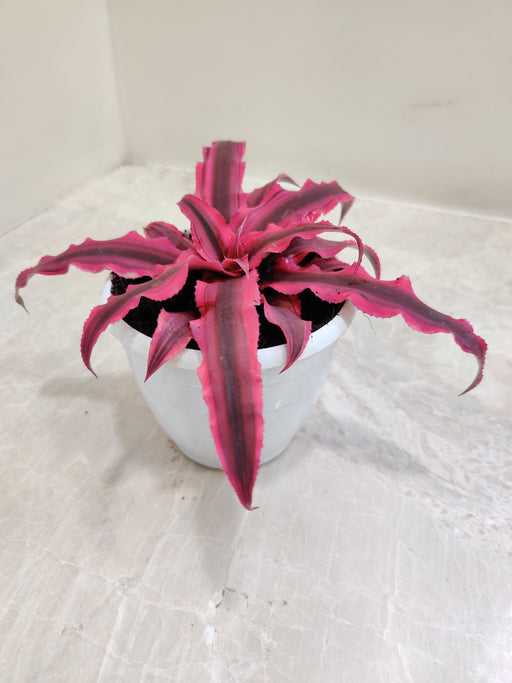
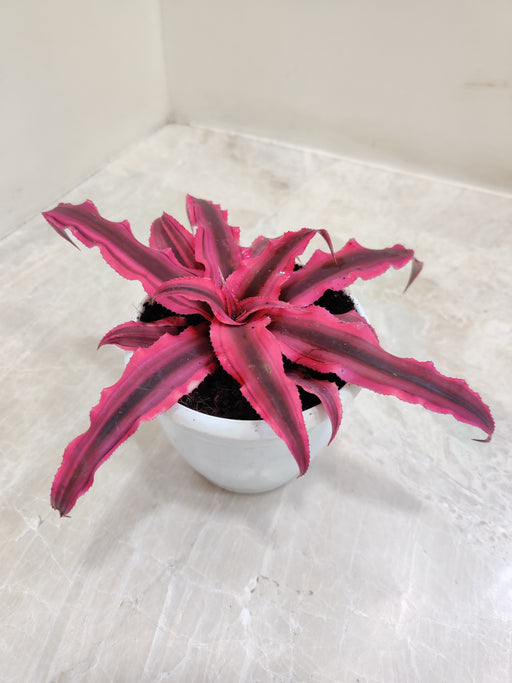
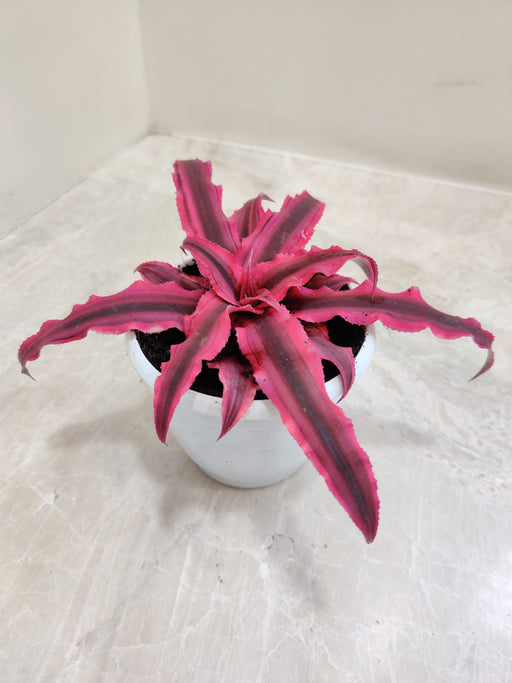
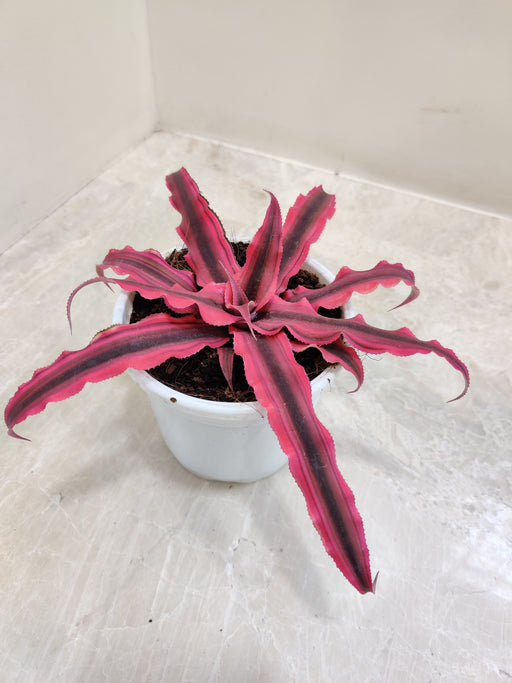
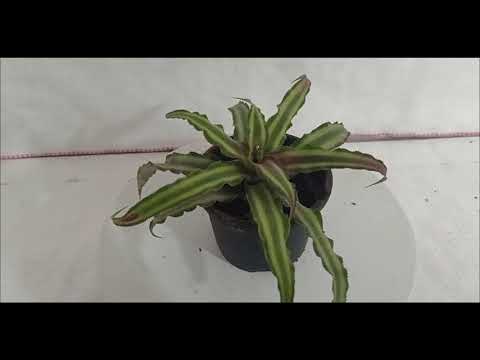
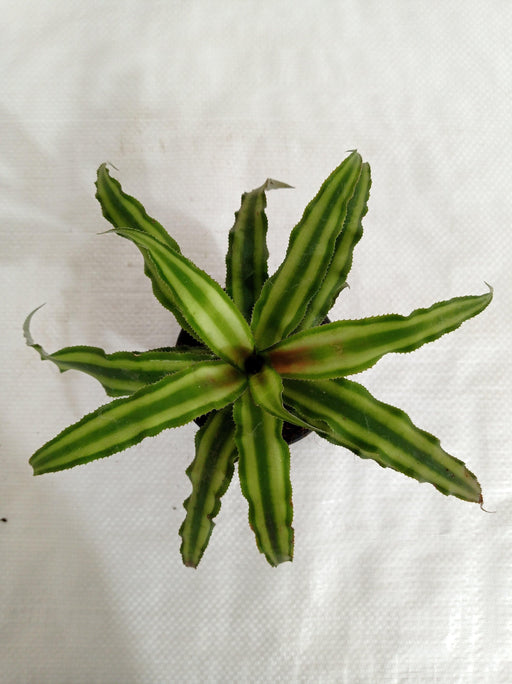
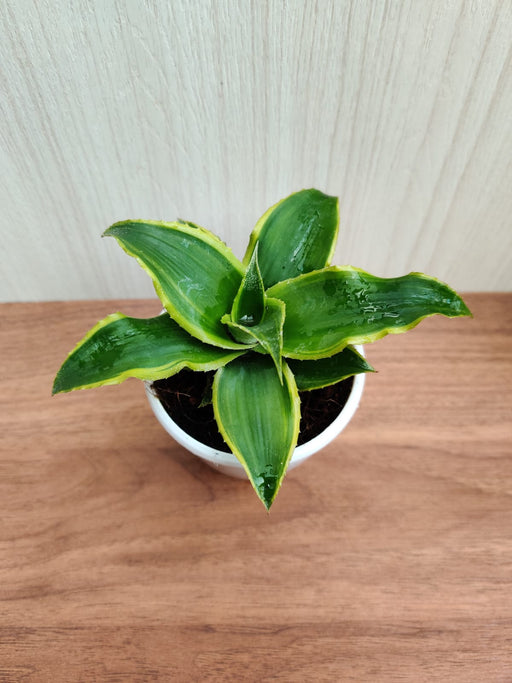
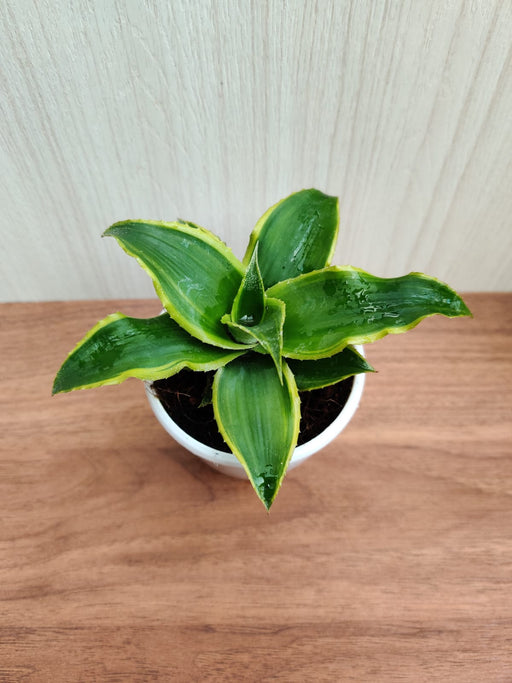
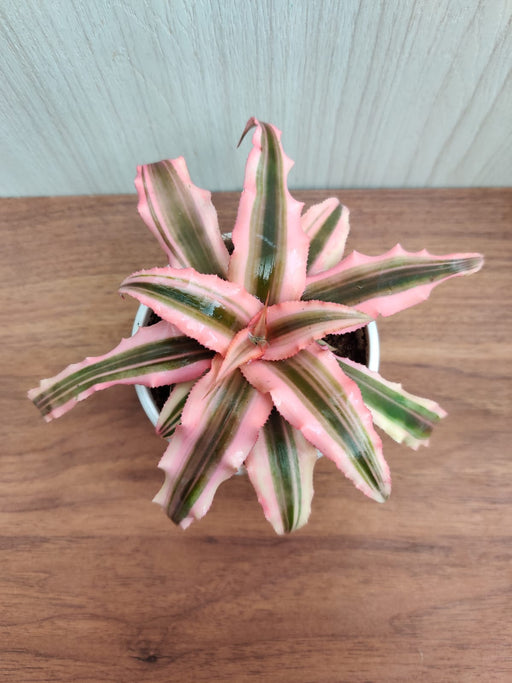
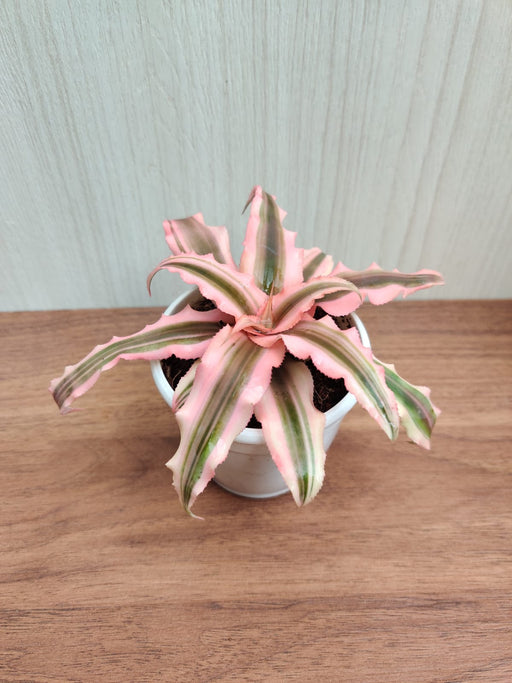
Leave a comment